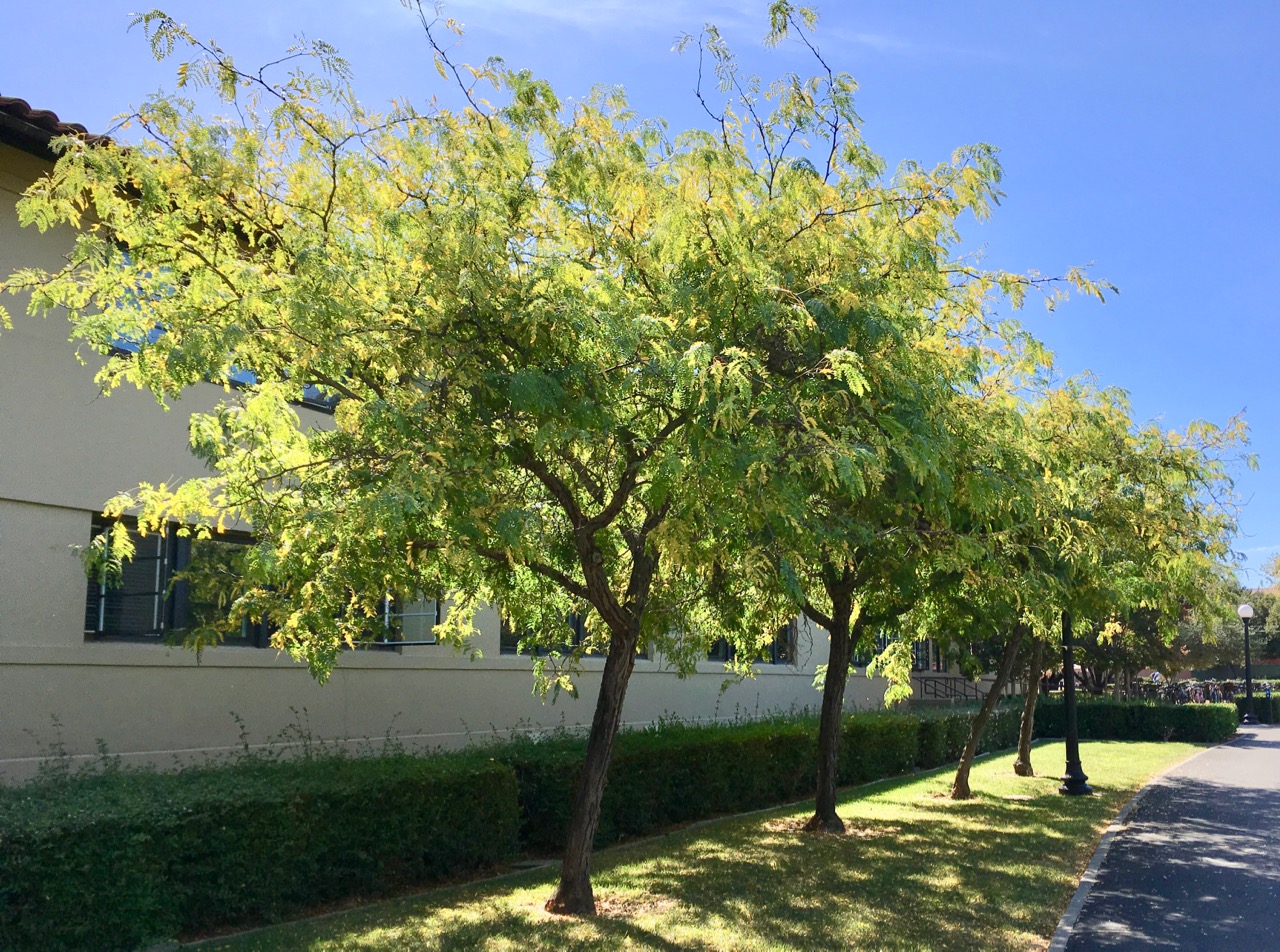Gleditsia triacanthos
 honey locust
honey locust
A deciduous tree whose compound leaves appear in March. A distinctive feature is the large, flat, pointed pod, around a foot long and an inch wide, containing sweet pulp and many shiny brown oval seeds ⅜ inch long. The pods are edible when fresh; some continue to hang on after the leaves fall.
Two are in the lawn with the male carob tree south of Arrillaga Alumni Center; a large black locust is nearby. Wicked spines, some with stout side spurs in threes can be seen on the branches. So extraordinary are the larger and more complex of these armaments that it makes you wonder what the tree had in mind to guard against. The spineless form inermis (Latin for unarmed) may be seen at Florence Moore Hall between Alondra and Cardenal. A row of four are on Galvez Mall on the west side of Crothers Hall. Three are growing in what used to be the front, fenced area of the old Children’s Center at 685 Pampas Lane, a spot currently under construction (April 2020). The spineless specimen noted in the 2004 Wilbur Hall map was removed.
The wood is durable in the ground, hard, strong, and suitable for craft work. The national champion honey locust is in a cemetery in Fincastle, Virginia, and was 103 feet high in 2019.
Name derivation: Gleditsia – after Johann Gottlieb Gleditsch, Director of the Botanical Garden at Berlin, 1714–1786; triacanthos – Greek tri (three) and acanthos (spine), with three spines.
About this Entry: The main text of this entry is from the book Trees of Stanford and Environs, by Ronald Bracewell, published 2005. Crothers Hall location added, minor edits Oct 2017 (SP). Flo Mo specimen location clarified, f. inermis added (Bracewell’s 1984 Trees on the Stanford Campus described it as “variety ‘inermis’”); national champion updated from specimen 120 feet high in 1967 in Chambersburg, Pennsylvania; minor edits; Wilbur location noted as removed; all locations now verified (Apr 2020, Sairus Patel).




